The term terete means "cylindrical or slightly tapering, and without substantial furrows or ridges." This term is sometimes incorporated in the Latin names of plants, such as
Luisa teretifolia, which you could translate to mean "the Luisa with cylindrical foliage." There, you just learned Latin! Wasn't that easy?
There are a number of orchids with terete leaves and I have obtained some recently. Sometimes these orchids are referred to as succulent because of their appearance. These plants are well adapted to dry seasons and can store energy in their swollen, cylindrical leaves during dry periods, just like many cacti and succulents do. But note: just because an orchid (or any other plant) has terete leaves does not mean that it is succulent or that it grows in a location with a dry season.
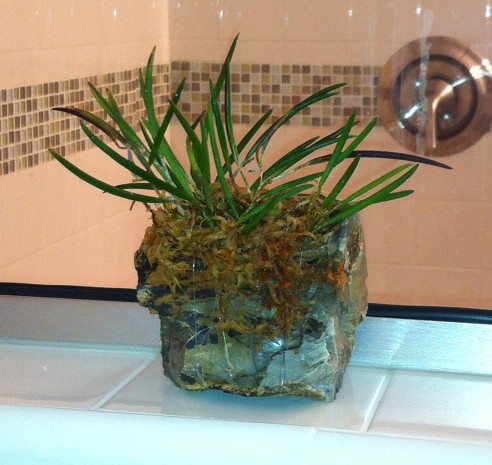 |
| Dockrillia striolata mounted on rock |
Dockrillia is a genus that was once considered part of the gigantic
Dendrobium genus. These plants are home to Australia and Papua New Guinea and are distinguished from other
Dendrobiums since they lack pseudobulbs, which are usually very prominent as "canes" with other
Dendrobiums. I just got a little plant (pictured above) of
Dockrillia striolata (synonymous with
Dendrobium striolatum). The fleshy little needles of this orchid will turn red when exposed to a lot of light. You can see that a couple of the leaves on mine are more purple/red in color. You can see a photo of the blooms
here.
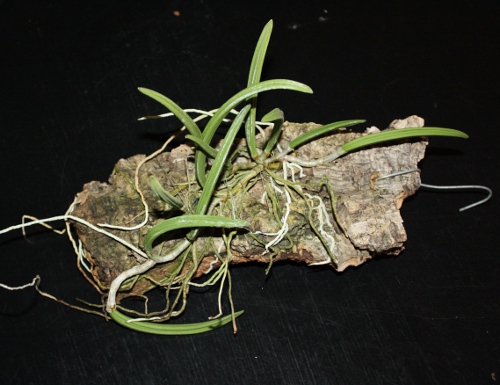 |
| Dockrillia wassellii |
I also recently got a large mounted
Dockrillia wassellii (above). These two species are the most common of the
Dockrillia genus in the US. There are MANY cultivars and other species available in Australia, but it is not easy to import these to the US. My
wassellii plant is considerably larger than I expected it to be. I started to joke with Christie about how unreasonably large the box was when I received it for such a small plant inside. Then I opened it to see that the box size was quite appropriate. This plant is listed as being "nearly terete" since the leaves are actually have furrows running the length.
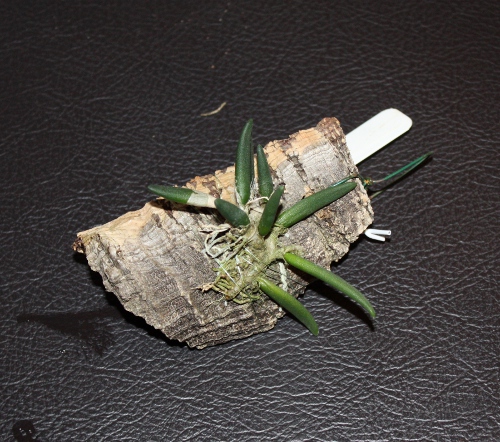 |
| Dendrobium lichenastrum var. prenticei |
My main reason for expecting a smaller plant was because I was expecting something more along the lines of
the
Dendrobium lichenastrum v. prenticei that I had purchased just a couple weeks earlier (pictured above). That plant is tiny. I talked about that plant in my
mounted orchids post in December. I'm not sure why this plant has not been transferred to the
Dockrillia genus. It appears to be a good candidate and is even from Australia.
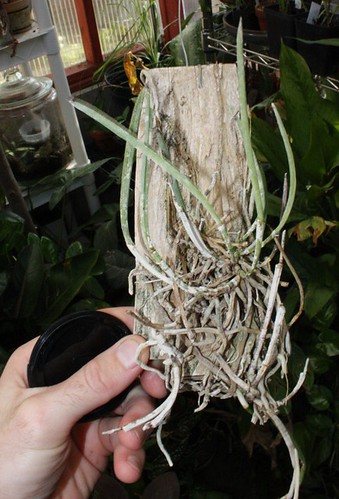 |
| Brassavola nodosa |
Another plant I included in my mounted orchids post in December is terete-leaved,
Brassavola nodosa (pictured above).
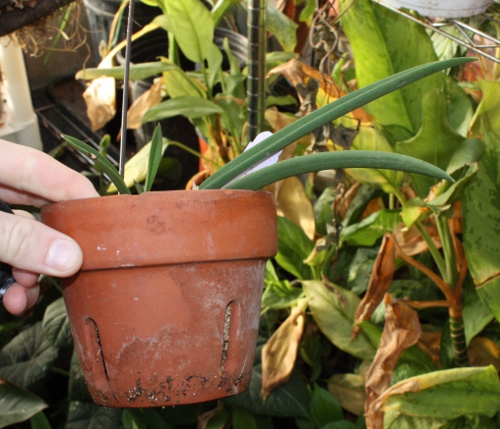 |
| Bepi. 'Femme Fatale' |
I have had this intergeneric hybrid orchid,
Brassoepidendrum Femme Fatale 'BJ' for about eight months now. It has stiff, terete leaves and the
most awesome speckled blooms. Mine hasn't bloomed yet, but I'm anxiously awaiting that day.
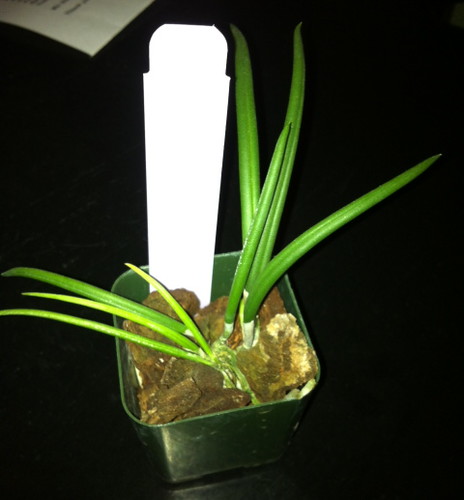 |
| Leptotes bicolor |
My final recent purchase of a terete-leaved orchid is
Leptotes bicolor. I'll finish my post with a couple of bloom pictures. Recently, my friend Leslie attended the big orchid show at the Missouri Botanical Gardens and took some photos of a mature, blooming
Leptotes for me. It is a beautiful plant in bloom.
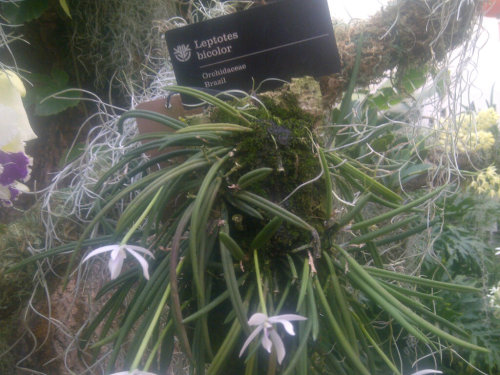 |
| Leptotes bicolor in bloom at the Missouri Botanical Garden |
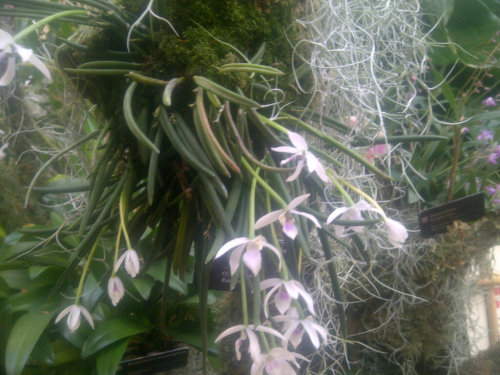 |
| Leptotes bicolor at the Missouri Botanical Garden |








Interesting and I love the mounted orchids. :)
ReplyDeleteGreat species. Orchids with terete leaves will generally accept higher light as well. However, I've been advised by some orchid growers to keep Leptotes bicolor at Phalaenopsis lighting.
ReplyDeleteI didn't realize there were so many orchids with terete leaves. Looks like you got some really cool blooms to look forward to on those!
ReplyDelete